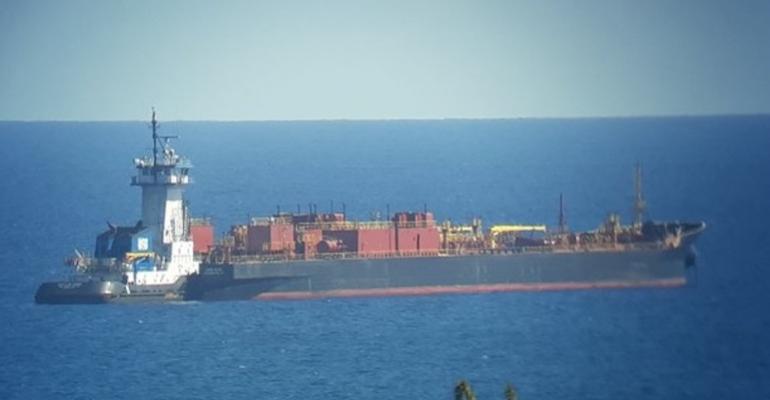Indeed, the anti-Jones Act propaganda machine, calling for waivers on use of compliant tonnage for coastwise moves, was in full swing, in late October and early November, 2022, as media angst regarding a “diesel shortage” in the northeastern United States, included in Petroleum Area Defense District 1 or “PADD 1”, were running rampant. Tanker watchers, armed with graphics from numerous vessel tracking websites, noted that US-flagged, crewed and owned tankers were calling at terminals in New York harbor. Normally, these vessels, which load up at refineries in the US Gulf region “PADD 3” do not discharge at facilities farther north than Delaware Bay.
What happened here? An unusual confluence of factors- reduced production - blame Covid, refinery closures, and increased exports and reduced imports, due to geopolitical issues, at a time of economic recovery had led to historically low levels of overall distillate stocks.
One widely quoted statistic showed the US overall supply of diesel fuel at the equivalent of just under 26 days consumption as the country was moving into the heating season. The end October 2022 overall US distillate fuel supply, around 110 million barrels based on data from the Energy Information Administration (EIA), was significantly below the 133 million barrels at end October 2021, and way below the 156 million barrels a year before that.
In the vulnerable PADD 1 region, end October 2022 distillate stocks stood at approximately 26.4m barrels, significantly below the year earlier 42m barrel levels, and dramatically below the 63m barrel level at end October 2020.
Tankers provide an important, but small share of the PADD 1’s overall consumption. A late 2022 blog posting from Mansfield Energy, a fuel supplier to the surface transport business, noted that: “In a region that consumes almost half of the US’s daily fuel demand… only 15% (33 million gallons, or 800,000 bpd) are produced within the region. The PADD receives a large chunk of its supply from just two pipelines – the Colonial Pipeline and the Plantation Pipeline. In the northern areas, fuel is also imported from other countries, mainly Canada and Europe.” Using these numbers, daily PADD 1 demand for fuel, includes gasoline and diesel, would be roughly 5.5m bpd.
![Marcus_US_East_Coast[21].jpg Marcus_US_East_Coast[21].jpg](/sites/cet.com/files/Marcus_US_East_Coast%5B21%5D.jpg)
The International Energy Agency (IEA), in a Spring 2021 posting, said, “PADD 3 (Gulf Coast) is its largest supplier, sending about 3.2 m bpd of products on average, including 2m bpd of gasoline and 1.2 m bpd of middle distillates (diesel and kerosene).” IEA economists said “…the Colonial pipeline [Houston to New York]… transmits 2.7m bpd, and the smaller Plantation pipeline ships around 0.7 m bpd of products from Baton Rouge to Washington, DC. That leaves roughly 2 million barrels per day; after deducting products produced by refineries with PADD 1 , estimated by the IEA to be 600,000 – 800,000 barrels per day- in line with the Mansfield number, that means that roughly 1.2 – 1.4m barrels per day come in by water.
In the same IEA posting, written almost a year prior to the invasion of the Ukraine, they estimated that: Barge and tanker shipments of products [from PADD 3 to PADD 1] are limited to some 800,000 barrels a day to the southern regions of PADD 1…” requiring Jones Act compliant tonnage. Overall PADD 1 product imports, mainly motor gasoline and blending components, per the U.S. EIA, were just under 1 million barrels/day at end January 2023- at the low end, but within their historical range.
So ,what about the diesel “shortage” that had aroused concern four months earlier? The good news is the 2022- 2023 winter season has been warmer than normal, though several short-term “Arctic blasts” have led to led to bursts in short-term distillate demand; stocks have been rebuilt, albeit to levels still below the longer-term averages.
End January 2023 distillate stocks levels had rebounded to around 117m barrels (based on a four week average). Increasing distillate fuel imports helped; in early October, 2022 these were pegged at around 90,000 bpd. By late January, 2023, these had reached up to around 240,000 bpd.
Resources for readers
US EIA product imports
https://www.eia.gov/dnav/pet/pet_move_wkly_dc_R10-Z00_mbblpd_4.htm
Focus on PADD 1
https://www.eia.gov/dnav/pet/PET_MOVE_IMPCP_A2_R10_EPP0_IP0_MBBLPD_A.htm
Copyright © 2024. All rights reserved. Seatrade, a trading name of Informa Markets (UK) Limited.
Add Seatrade Maritime News to your Google News feed.  |

